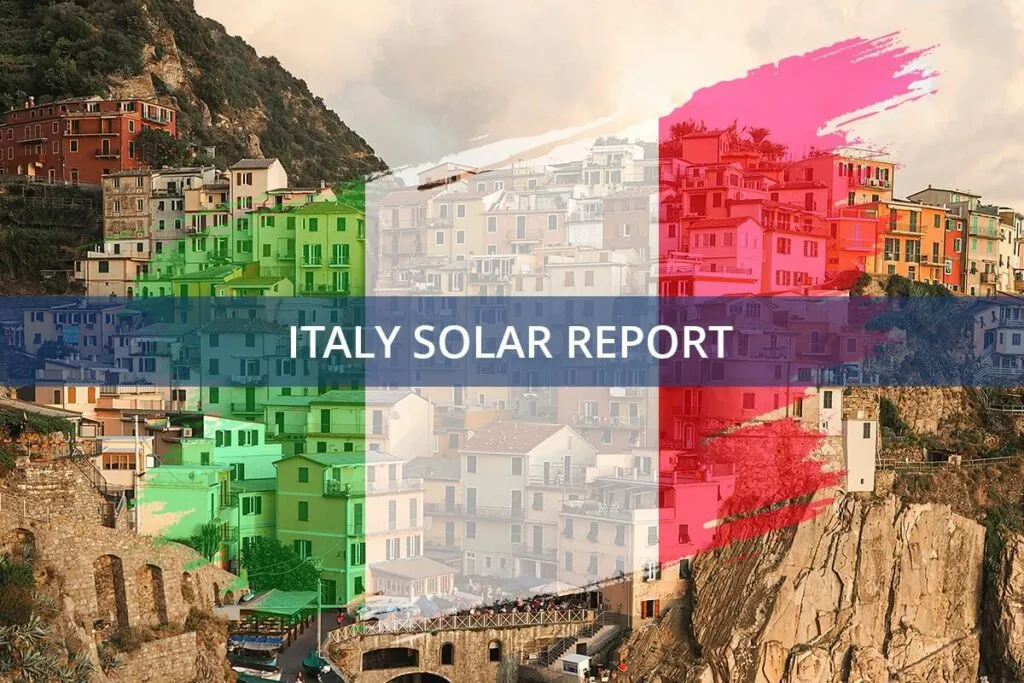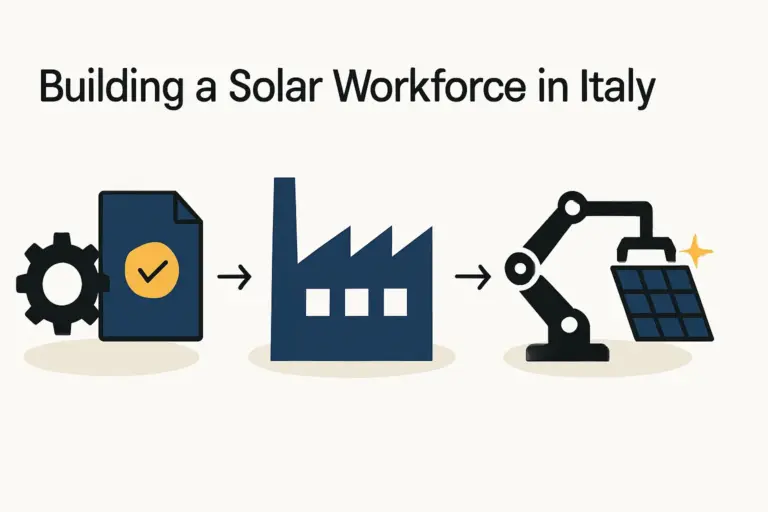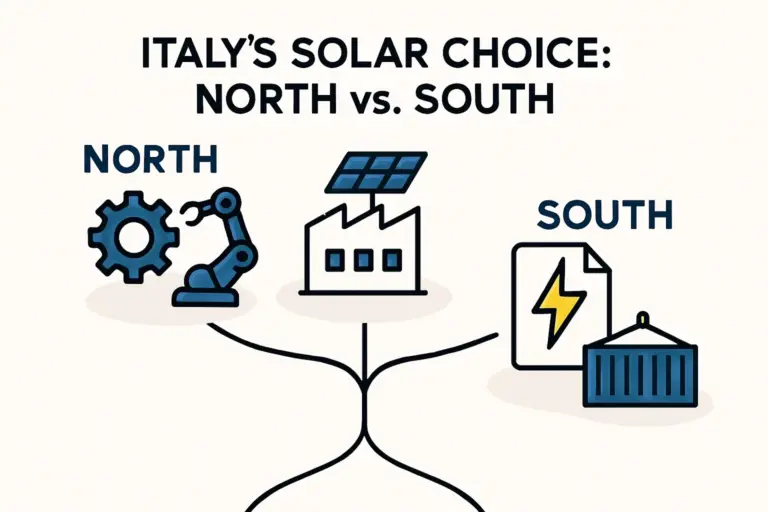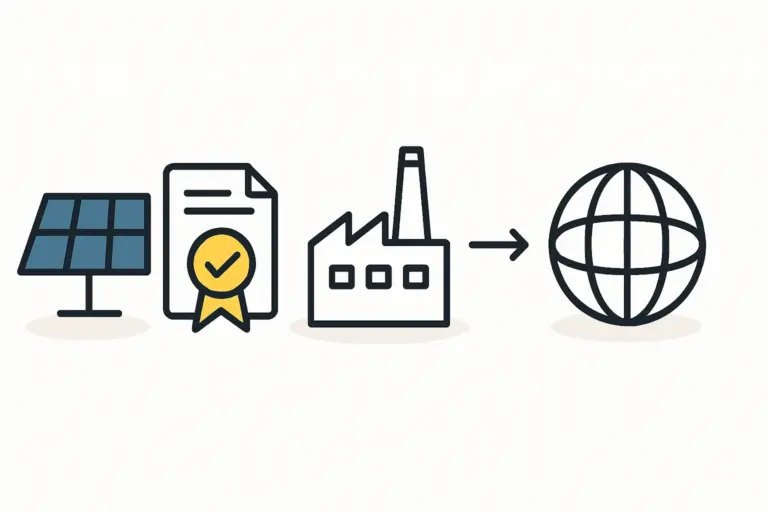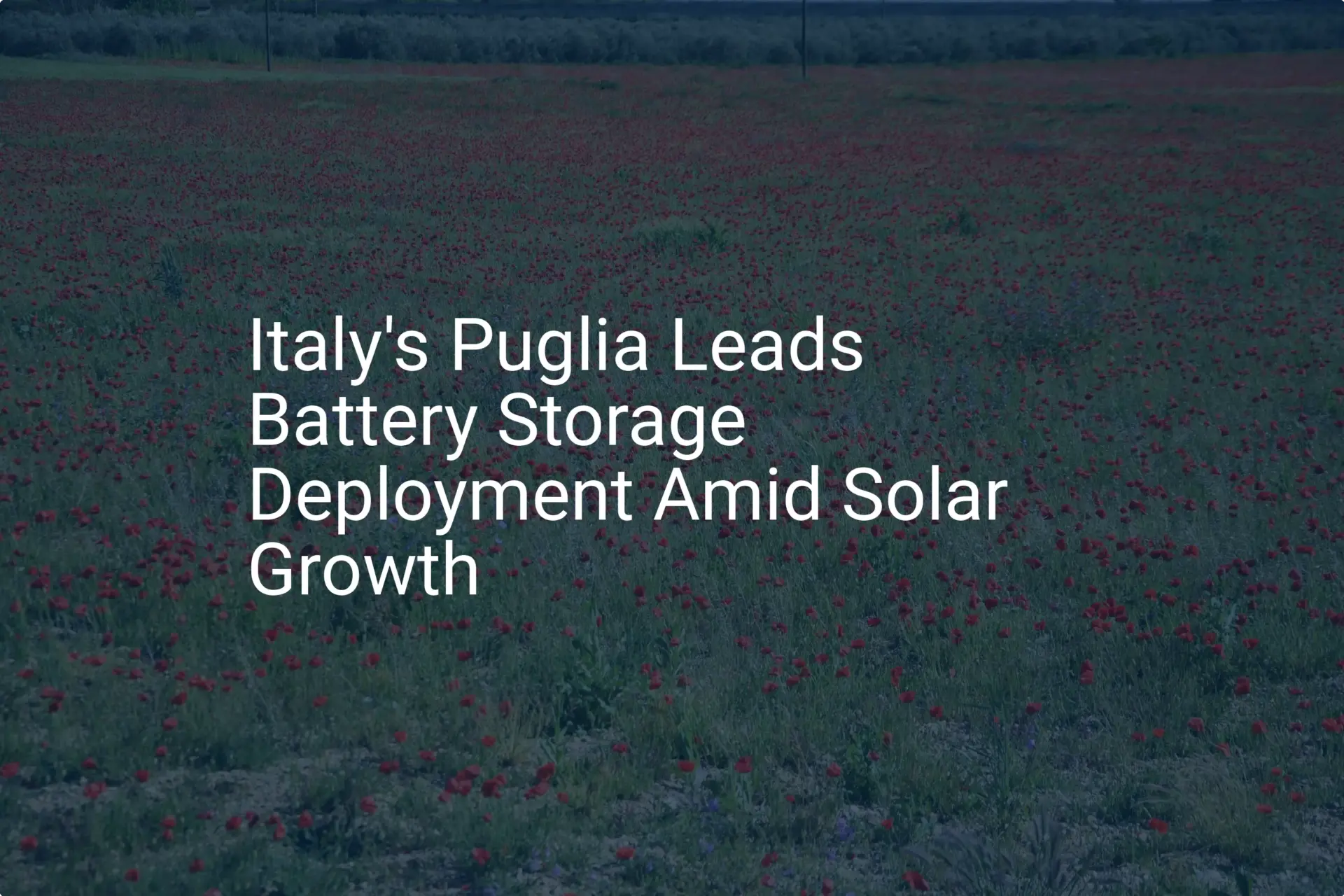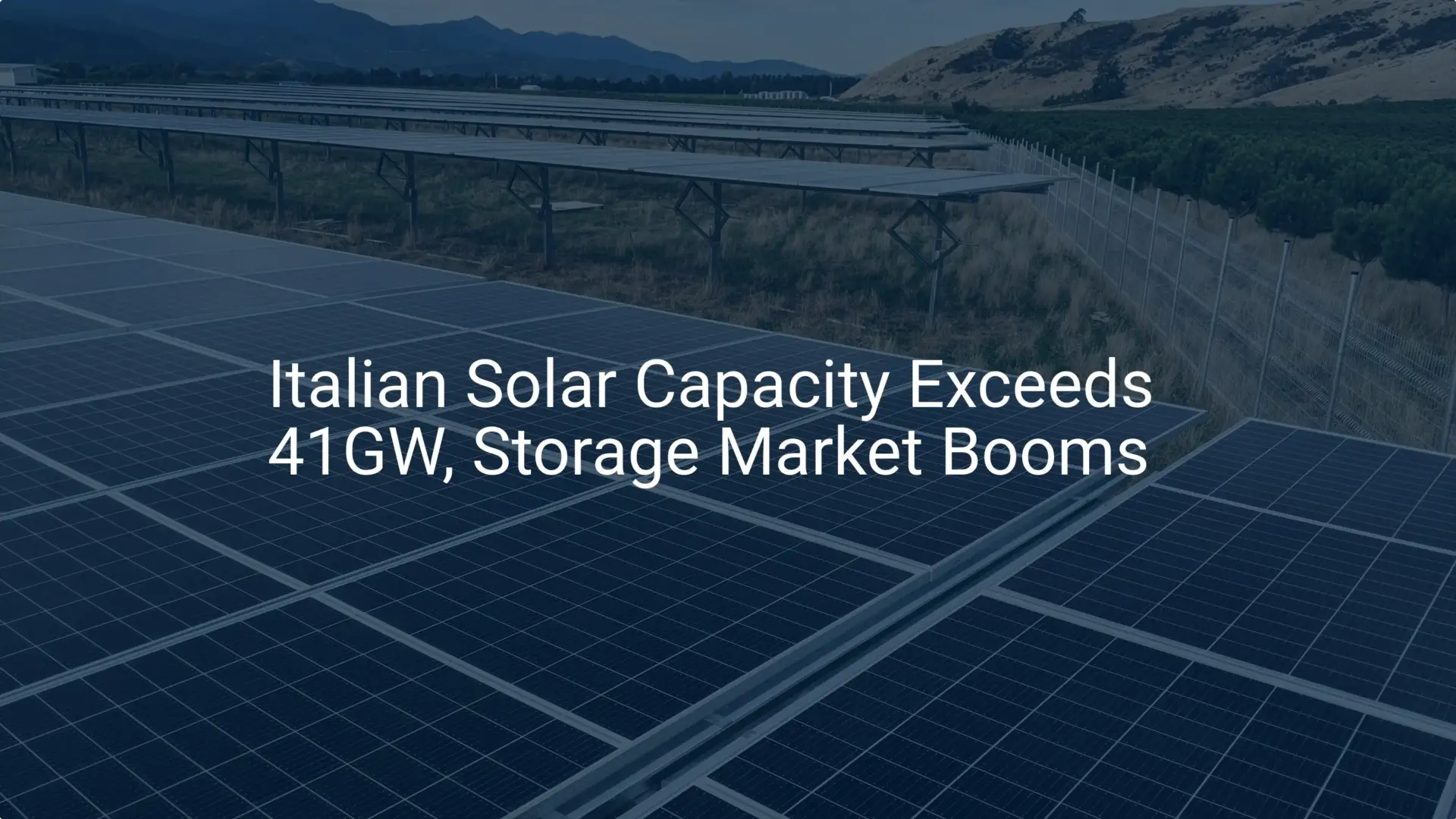An investor sees an opportunity in Italy. Its strategic location, skilled workforce, and commitment to renewable energy make it an attractive destination for a solar module factory. He drafts a preliminary business plan, secures initial funding, and begins scouting locations.
He soon discovers, however, that the path from concept to construction winds through a complex, multi-layered regulatory framework. What he anticipated as a straightforward administrative process is in fact a significant strategic challenge, where a single misstep can lead to costly delays.
This guide provides a clear overview of the essential permits required to establish a solar production facility in Italy. It outlines key procedures, highlights critical regional differences, and addresses the common challenges international investors encounter. Understanding this landscape is the first step toward transforming a promising venture into an operational reality.
The Italian Regulatory Framework: An Overview
Unlike centrally managed systems, Italy’s permitting process is distributed across national, regional, and municipal levels of government. This decentralized structure means a solar manufacturing project must satisfy the requirements of several different authorities. While this can seem daunting, the system is structured around three core authorizations.
Key Permits for a Solar Manufacturing Facility
-
Autorizzazione Unica (AU) – Single Authorization: This is the primary and most comprehensive permit. Managed at the regional or provincial level, it consolidates most authorizations—including environmental, landscape, and urban planning approvals—into a single proceeding.
-
Valutazione di Impatto Ambientale (VIA) – Environmental Impact Assessment: A mandatory and rigorous assessment for large-scale industrial projects, including solar manufacturing plants with a production capacity exceeding 50 MW or those located in environmentally sensitive areas. Smaller facilities may undergo a simplified screening process.
-
Permesso di Costruire – Building Permit: Issued by the local municipality (Comune), this permit is the final green light for construction. It is granted only after the AU has been secured, verifying the project’s compliance with local building codes, safety standards, and zoning regulations.
A successful project hinges on a detailed understanding of how these three components interact. A comprehensive business plan for a solar module factory must account for the timeline and resources needed for each stage.
The Permitting Process: A Step-by-Step Breakdown
The journey from application to approval unfolds in a clear sequence. While the typical timeline is 6 to 12 months, experience from J.v.G. turnkey projects shows that complexities can extend this period, particularly if the initial documentation is incomplete.
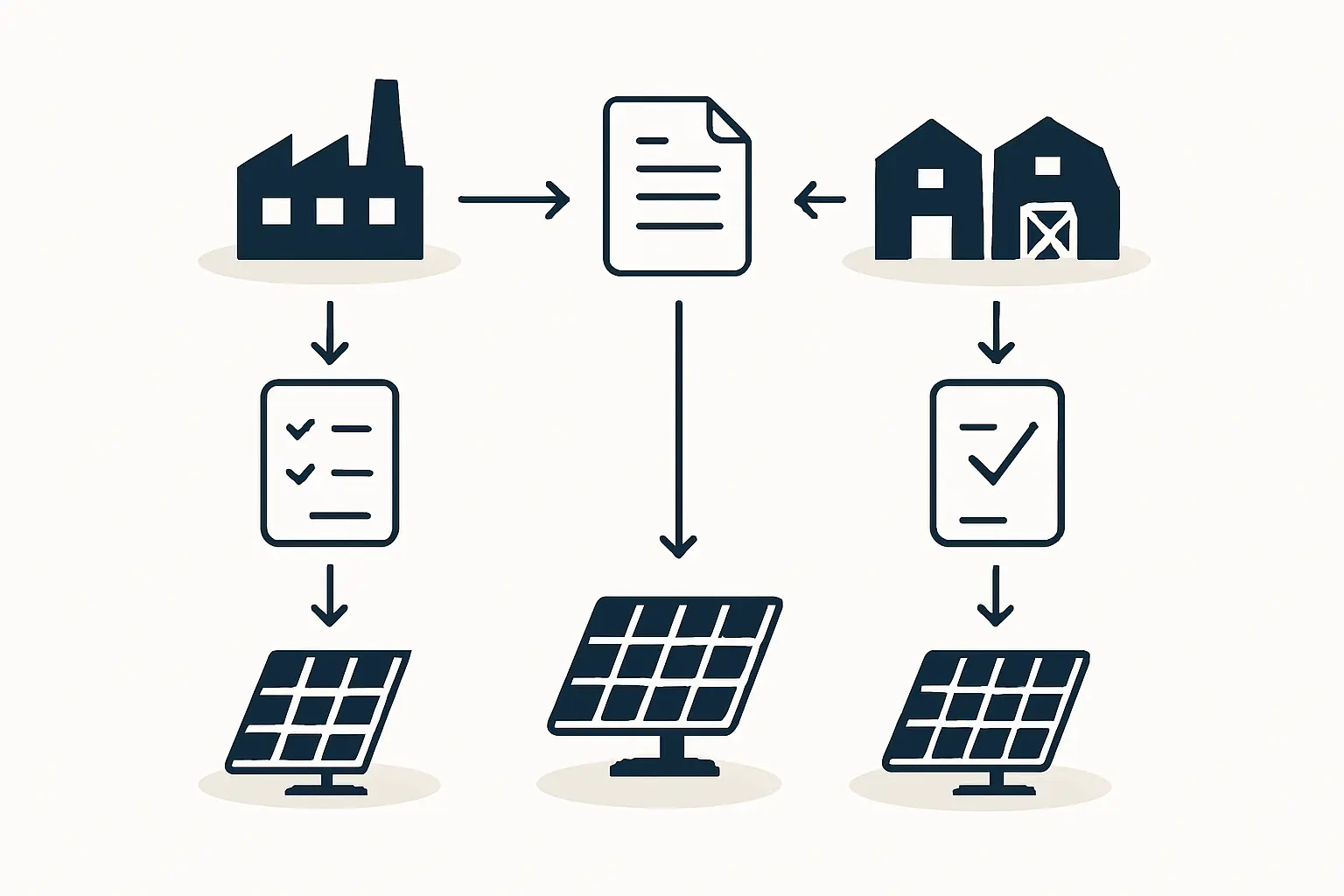
Northern Italy (e.g., Lombardy, Veneto, Emilia-Romagna)
Strengths: Highly industrialized with robust infrastructure, a dense network of suppliers, and a skilled labor pool. Regional administrations are often well-equipped to handle complex industrial applications, potentially leading to more predictable timelines.
Challenges: Stricter environmental regulations and higher land and labor costs. Competition for prime industrial sites can also be intense.
Southern Italy (e.g., Sicily, Puglia, Campania)
Strengths: High solar irradiation, greater availability of land, and access to significant national and EU development funds. The establishment of Special Economic Zones (ZES) offers major advantages, including tax credits, investment incentives, and, critically, a fast-track permitting process.
Challenges: Can be prone to administrative delays—what Italians call “lungaggini burocratiche” (bureaucratic slowness). Infrastructure may be less developed in certain areas.
For many international investors, the benefits offered by the ZES in the South present a compelling case, potentially offsetting the perceived bureaucratic risks.
Common Challenges and Strategic Preparation
Navigating the Italian permitting process requires more than just submitting paperwork; it demands proactive management of common pitfalls.
Key Challenges for Investors
Bureaucratic Delays: The interplay between municipal, regional, and national bodies can create bottlenecks. A lack of clear communication or coordination between agencies is a frequent source of delay.
Regulatory Ambiguity: Laws and regulations can change. Staying abreast of the latest legislative updates is essential to ensure an application remains compliant throughout the review period.
Underestimation of Local Nuances: Foreign investors often underestimate the importance of local relationships and the unwritten rules of Italian administration. What works in Germany or North America may not translate directly.
J.v.G.’s experience setting up a turnkey solar manufacturing line shows that the most common reason for project delays—sometimes exceeding six months—is an incomplete or improperly prepared initial application. Meticulous preparation is the single most effective tool for mitigating risk.

The Importance of Expert Guidance
Engaging experienced local legal and technical consultants is not an optional expense but a fundamental requirement for success. These experts can:
- Ensure all documentation is accurate and complete before submission.
- Liaise effectively with various public authorities.
- Anticipate potential roadblocks and formulate strategies to address them.
- Provide invaluable insight into the specific practices of the chosen region.
Frequently Asked Questions (FAQ)
How long does the entire permitting process typically take?
A realistic timeline is between 6 and 12 months. However, this can be extended by factors such as the project’s scale (a full VIA adds considerable time), the regional administration’s efficiency, and the quality of the initial application.
Is a local partner or consultant essential?
For foreign investors, a local expert is highly recommended. Their understanding of the language, culture, and bureaucratic intricacies is invaluable. Attempting to navigate the system without this support is a significant risk.
What is the single biggest mistake foreign investors make?
Underestimating the time and complexity involved. Many create business plans with overly optimistic timelines for approvals, leading to pressure on financing and project schedules when delays inevitably occur.
Can the permitting process be expedited?
Operating within a Special Economic Zone (ZES) in Southern Italy is the most direct way to access a “fast-track” procedure. Outside these zones, the best accelerator is thorough preparation to avoid requests for supplementary information, which are a primary cause of delays.
Conclusion
Italy presents a substantial opportunity for entrepreneurs entering the solar manufacturing sector. However, the country’s complex regulatory environment requires careful, strategic navigation. Success is not merely about having a sound business model; it is about mastering a multi-stage, multi-agency permitting process with unique regional challenges.
Understanding the roles of the Autorizzazione Unica, the VIA, and the Permesso di Costruire—and preparing for regional variations and potential bureaucratic hurdles—is key to building a realistic project timeline. Investing in expert local guidance from the outset is the most reliable way to de-risk the process and ensure a promising venture is built on a solid legal and administrative foundation.

